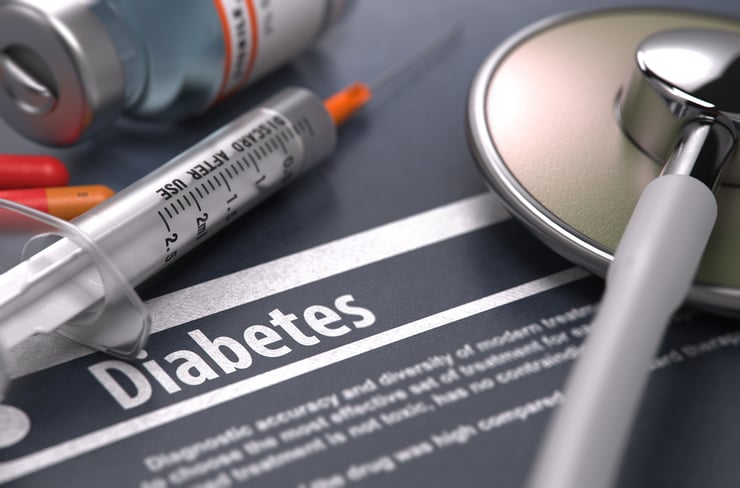
How easily can you spot the differences between Type 2 diabetes and prediabetes?
As a lifestyle coach, you’re equipped to save lives by helping your participants make the lifestyle changes they need to reduce their risk of Type 2 diabetes. However, there are times when it’s challenging to recognize when your participants may need an extra boost to keep their blood sugar down and stop prediabetes in its tracks.
At Realizing DPP, we understand that thousands of people can take control of their lives and reverse their prediabetes diagnosis, but they need the proper knowledge to unlock those changes. That’s where you come in.
Your lifestyle coaching skills help diabetes prevention program participants change their lives for the better. One area you need to focus your attention and teaching is the difference between prediabetes and Type 2 diabetes.
In this article, you’ll gain a deeper understanding of the difference between the two diagnoses and what steps your participants can take to control, slow, or even reverse their diabetes symptoms.
Prediabetes Vs. Diabetes: How Are They Diagnosed?
To help your participants make waves with outstanding lifestyle choices, they first need a good understanding of what they’re actually up against. After all, making changes is challenging when you don’t know why they are necessary.
With that in mind, let’s get into the details that set prediabetes apart from Type 2.
Blood Sugar and A1C Levels
We all know that elevated blood sugar levels are at the core of diabetes, and those blood sugar levels are the best indicator of what’s going on in your participants’ prevention journey.
People with prediabetes have lower blood sugar levels in comparison to Type 2. The National Institute of Diabetes and Digestive Kidney Diseases classifies prediabetes blood sugar levels in the following ways:
- An A1C level (Avg blood sugar levels across three months) between 5.7 to 6.4 percent
- A fasting plasma glucose level between 100-125 mg/dl
- An oral glucose tolerance test result between 140-199 mg/dl
In comparison, people with Type 2 diabetes have higher test results, including:
- An A1C level of 6.5 percent or higher
- A fasting plasma glucose level of 126 mg/dl or higher
- An oral glucose tolerance test result of 200 mg/dl or higher
It’s important to remember that if your participants are in that prediabetes blood sugar range, things aren’t ideal, but they can turn things around!
Simple lifestyle changes like increased activity, less time sitting, and healthier diet options make all the difference in the world when it comes to preventing Type 2 diabetes and reversing prediabetes.
Insulin Resistance and Insulin Levels
High blood sugar levels cause the body to work in overdrive, producing insulin to get everything back under control, but the cells begin to resist insulin when prediabetes and Type 2 develop.
As a result, those with a prediabetes or Type 2 diagnosis will have higher insulin levels because the body needs to produce more to get blood sugar levels under control. However, most doctors won’t test for insulin levels because the tests are much more intensive than blood sugar tests.
Insulin resistance may seem scary to your participants, but they don’t need to be afraid!
When your participants take steps to improve their lifestyles and get healthier, they will significantly change their insulin resistance. Studies have shown that weight loss and a better diet can help people reverse and prevent insulin resistance from taking control of their lives.
Warning Signs of Type 2 Diabetes and Prediabetes
One thing Type 2 and prediabetes share is their ability to exist without displaying any symptoms. In fact, almost 80 percent of people diagnosed with prediabetes have no idea they are prediabetic.
Because of their ability to hide in the shadows, your participants need to visit the doctor regularly. It’s easy to make excuses about why we don’t need to visit a physician or only show up at the doctor when we’re sick. But the fact is that regular checkups make all the difference in the world when it comes to catching the symptoms of prediabetes and stopping it in its tracks. The knowledge people gain from annual appointments is extremely valuable, and your participants can get even more information from their physician while starting to take steps toward reversing their prediabetes diagnosis.
What’s the Difference in Treatment Between Prediabetes and Type 2 Diabetes?
Prediabetes and Type 2 diabetes are treated similarly depending on how far the Type 2 diabetes diagnosis has progressed. In both cases, lifestyle care changes are the most effective way to control blood sugar levels and slow the progression of diabetes.
Are There Medications for Treating Prediabetes?
In short, no.
Some sources believe that taking metformin, an anti-diabetic medication, could aid people in reversing their prediabetes diagnosis, but the FDA has not approved it as a treatment for prediabetes.
But that shouldn’t discourage your participants. Prediabetes is treated best through healthy lifestyle changes, and your participants can naturally reverse their prediabetes by working with you.
In fact, people who participate in CDC-approved lifestyle care programs like Realizing DPP can reduce their risk of developing Type-2 diabetes by 58 percent!
Are There Medications for Treating Type 2 Diabetes?
Using medication for treating Type 2 diabetes all depends on blood sugar levels and the progression of diabetes. In the early stages of Type 2, lifestyle changes are the best approach to reversing symptoms and lowering blood sugar levels.
However, doctors can prescribe medication to help those with Type 2 diabetes increase insulin levels. Some medicines used to fight Type 2 diabetes include metformin, sulfonylureas, and injectable insulin.
Those with Type 2 diabetes may be discouraged that they need additional insulin, but they can still make healthy choices moving forward. Taking the appropriate steps to lose weight and maintain an improved lifestyle can help people with Type 2 reverse symptoms and eliminate the need for insulin.
Do People with Prediabetes Need to Perform Blood Sugar Tests Regularly?
Nope!
Your prediabetic participants don’t need to worry about finger pricks and blood sugar tests while making lifestyle changes to better their health. Instead, they need to be conscious of meeting regularly with their primary care physician and following the testing instructions given by their doctor.
If you have participants who want to perform more regular glucose testing for their peace of mind, constant glucose monitoring devices, or CMGs, are a great way to test blood sugar without needing continuous finger pricks.
Can Prediabetes and Type 2 Diabetes Be Cured?
There is no cure in the sense that you can take a medicine that eliminates insulin resistance for prediabetes and Type 2 diabetes, but the condition is reversible.
This means that those living with diabetes cannot wholly eliminate the diagnosis, but they can significantly impact how much diabetes controls their lives through lifestyle changes. Dedication to lifestyle care changes may be challenging, but they are 100 percent possible.
These are our top 3 favorite lifestyle changes that make an impact:
Change #1: Encourage Your Participants to Get Active
One of the worst things for people to do once they’ve received a prediabetes diagnosis is lead a sedentary lifestyle. Sometimes sitting at a desk is unavoidable, but once that workday ends, your participants need to be as active as possible.
At RDPP, we’ve found that it’s best to encourage your participants to find activities that bring them joy while exercising. That could mean finding their Zen by doing yoga, hitting up the local greenway trails to go walking or biking, or getting active in the pool with water aerobics.
It doesn’t matter what activities appeal to your participants — what matters is that they find ways to stay moving.
Change #2: Help Your Participants to Improve Their Diets
One thing that sugary sodas, fried foods, and desserts have in common is that they taste great. People love eating and drinking them, but these foods can spell disaster for your prediabetic participants.
Guiding your participants toward healthier foods doesn’t mean they need to stop eating food that tastes good, but it does mean that they should find great-tasting food that doesn’t raise their blood sugar too much.
Instead of a bowl of ice cream for dessert, encourage your participants to go for a low-fat yogurt parfait with fresh blueberries and oats. This option is a delicious, lower-sugar alternative that still satisfies a sweet tooth.
Change #3: Promote the Elimination of Bad Habits
Every lifestyle change that your participants make does not need to be additive. Sometimes it takes eliminating bad habits to improve prediabetes and Type 2 diabetes.
Damaging habits can be hard to break, but finding effective ways to help your participants eliminate things like tobacco use and excessive alcohol consumption will help them turn things around.
Always remember that these habits are difficult to change, and your participants most likely won’t cut them off cold turkey. However, your support will help them make the gradual steps they need to start eliminating bad habits.
Who Is at Risk for Prediabetes and Type 2 Diabetes?
Prediabetes affects people from all walks of life, but there are some common traits that many with a prediabetes diagnosis share. Here are some of the most common risk factors for developing prediabetes:
- Age: People who are 45 years or older tend to have a higher risk of prediabetes
- Weight: Those who are overweight or obese are at a higher risk of developing prediabetes, especially if they carry weight in the belly
- Low activity level: Many who spend multiple hours sitting at a desk or have extended periods of inactivity are more likely to develop diabetes
- A poor sleep schedule: People who have sleeping issues like sleep apnea or work shifts that interrupt their sleep may be more at risk of a prediabetes diagnosis
- Cholesterol levels: Many times, cholesterol levels and prediabetes go hand-in-hand. If you have a participant with high cholesterol, they may be more likely to develop prediabetes
Just because your participants may be at risk for developing prediabetes doesn’t mean they should be discouraged. Risk factors like weight, activity level, and sleep schedule can be reversed with the right lifestyle changes.
Make A Greater Impact with Realizing DPP
Before we sign off today, we want to thank you for the hard work you pour into your participants' lives. You do your best to ensure that each cohort member receives the proper care and attention they need to better themselves — and that’s incredible!
If you’re looking for more ways to make a more significant impact with your lifestyle coaching, we’ve got you covered at Realizing DPP. Our Mighty Network of current and retired lifestyle coaches has your back with inspiring insights into the lifestyle coaching community, and we have extensive resources to help you feel supported on your coaching journey.
In addition to our network of coaches, we also have an excellent mobile app to help you feel supported on the go. The RDPP app has everything you need to make a difference in the lives of your participants — all in the palm of your hand.
As always, if you’re a lifestyle coach in the state of Mississippi and you aren’t a part of our community, join Realizing DPP today! We have the tools you need to make a living while changing lives with your coaching.


